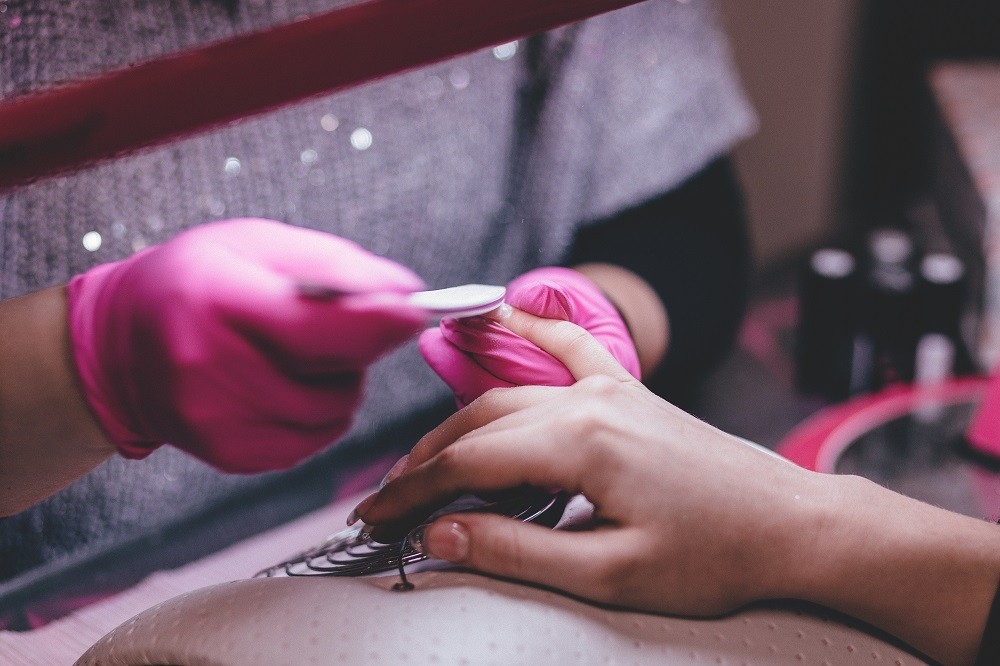Contents

Need to get your artificial nails removed but lack the time or patience to visit a salon? We’ve all been there, but removing your manicure is better than pulling it off your natural nails or mindlessly nibbling it off while watching TV. If you’re wondering how to remove artificial nails at home rapidly, we’ve got you covered — and we even have an acetone-free method. Explore Maby blog to learn more about nails.
According to Savannah Walker, a professional nail stylist and owner in New York City, removing acrylics also entails removing some of the numerous layers of your natural nail plate. “This usually results in thin, weak, broken nails that linger for months until they grow out,” she explains. And that is the best-case scenario! If you decide to use acrylics, we recommend maintaining the following handy tool kit at home for damage-free removal:
Tools you’ll need to remove acrylic nails safely
How to use acetone to remove acrylic nails at home,be aware that even if you follow these five stages, depending on how the technician put the acrylics initially and how carefully you handle the removal, you can still end up with natural nails that are somewhat weakened. However, Walker claims that “the acrylic procedure can be practically damage-free provided it is done patiently.” Now, adhere to these easy instructions from nail experts to remove acrylics quickly and damage-free:
Remove as much of the acrylic nail as you can with a file
You’ll need to thin down the entire area the acrylic covers in place of filing your nails typically (around the top border of the nail). File off as much of the acrylic product as you can with a coarse-grit file, advises Walker. “An emery board would be useless; you need an outstanding file.” Look for a nail drill or a 100-grit nail file, which is coarse enough to smooth off the acrylics’ surface.
Soak off any remaining acrylic nail
Walker advises soaking the nails in 100% acetone nail polish remover for as long as it takes to dissolve the substance once the acrylic has been filed down as much as possible.
Two strategies exist for doing this. Walker suggests one technique is to wrap each fingertip in foil after placing an acetone-soaked piece of cotton over each nail. “This is the better method,” she claims. Alternatively, dip your fingertips in some acetone.
If you want to do this, “just dip your nail tips in the bowl to avoid drying out the skin on your fingers and hands.” Acetone is quite volatile and can quickly irritate your respiratory system; therefore, only use it in a well-ventilated location.
Remove the remaining acrylic with a gentle scrape or buff
Check nails after acetone soaking “after 20 minutes, use a cuticle pusher or a stick to scrape off the melted acrylic. Continue doing this until all of the product has dissolved, “states Walker.
There might be a few little spots of acrylic left, but don’t mistreat them! If any little pieces of acrylic are obstinate, she advises buffing them smooth with a gentle foam nail buffer.
Protect your nails from future acrylic damage
Although acrylic isn’t always terrible for nails, it can damage natural nails. If you love acrylics, give them a month-to-month week off to maintain the condition of your nails. Use one strengthening nail treatment daily, such as Deborah Lippmann’s hydrating oil, to avoid breaking and nail care.
According to Deborah Lippmann, a manicurist and the creator of the Deborah Lippmann nail collection, “cover your nails with cuticle oil and cuticle cream, then wrap each hand in a warm washcloth for five minutes.” In no time, you’ll have nail stronger, shinier”. With Maby, you can take the initiative in everything.
How to remove acrylic nails at home without acetone
Using an acetone-free nail polish remover as a soak-off solution, acrylic nails can be removed without using acetone. However, Anastasia Totty, a LeChat Nails Educator in Saint Johns, Florida, warns that “if you prefer to avoid acetone, it will take longer to remove acrylics.” This is how:
- To reduce the time the augmentation needs to soak, she suggests removing the additional length using nail clippers.
- To remove as much product as possible without damaging the natural nail, use a nail file with a 100-grit surface. Totty notes that doing so will make it simpler for the solution to permeate the skin by removing any top coat, gel paint, or nail art.
- Repeat on each finger, placing a piece of cotton in direct contact with the acrylic and wrapping your fingertip in a bit of foil about two inches long after soaking the cotton in the remover. Remove the foil and cotton after waiting 15 to 20 minutes, then use a cuticle pusher or an orange wood stick to pry the sopped product away from the cuticle gently. Be patient, she advises, and if it isn’t sufficiently saturated, don’t scrape or peel any of it.
- If there is any remaining acrylic on the nails, rewrap them with other removers.
- Shape your nails with the file, then lightly buff them if necessary before washing your hands to eliminate any residual solution.
